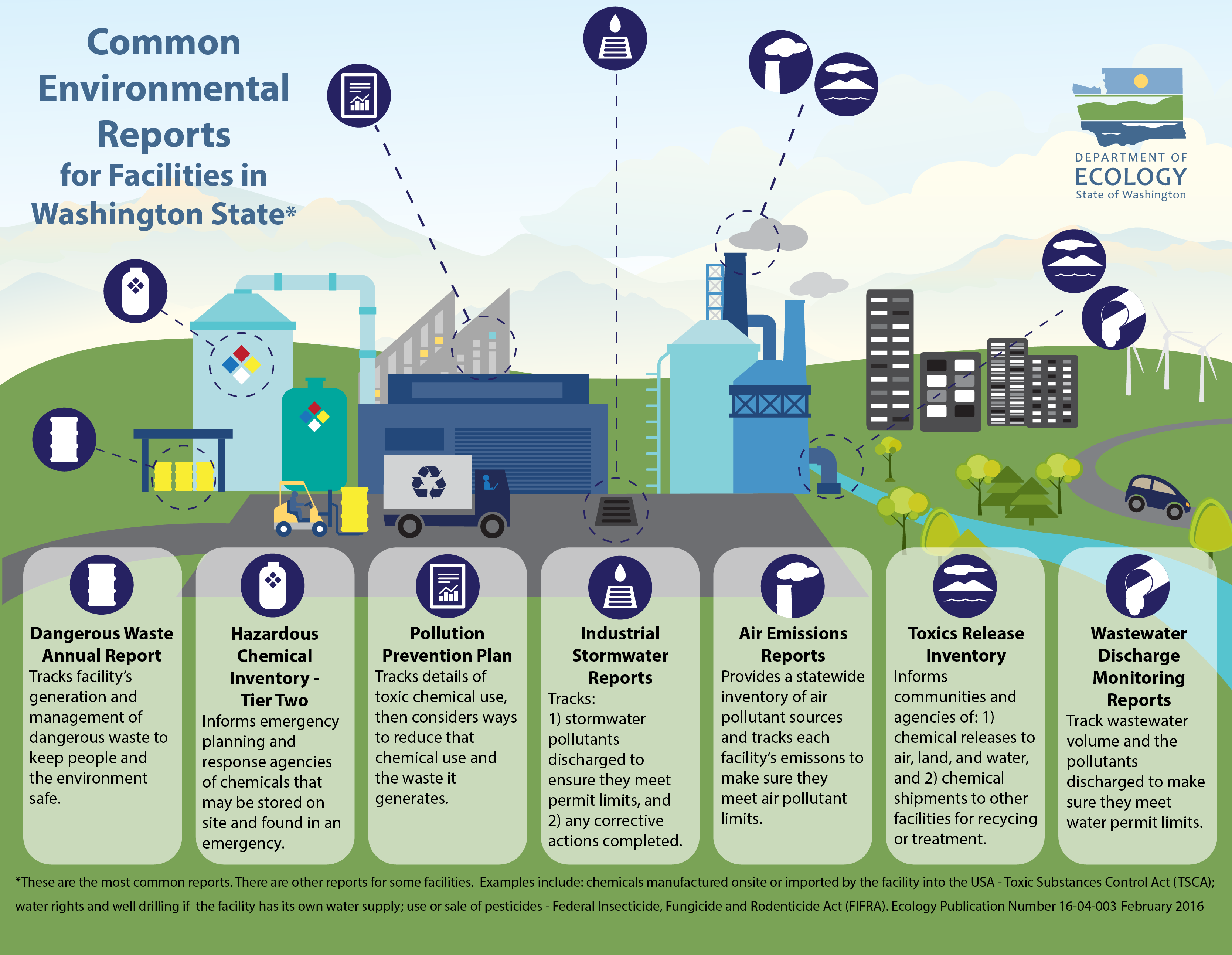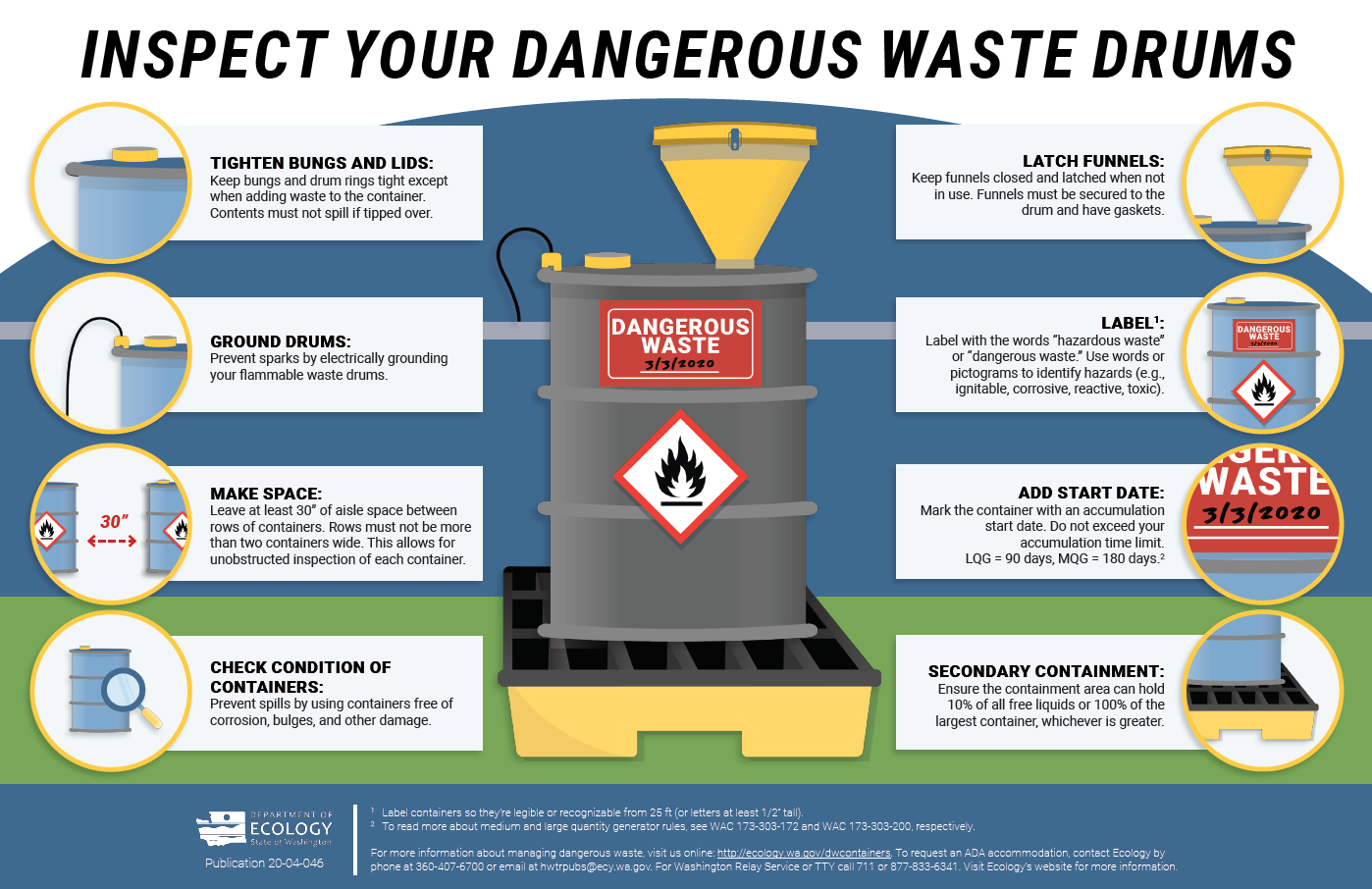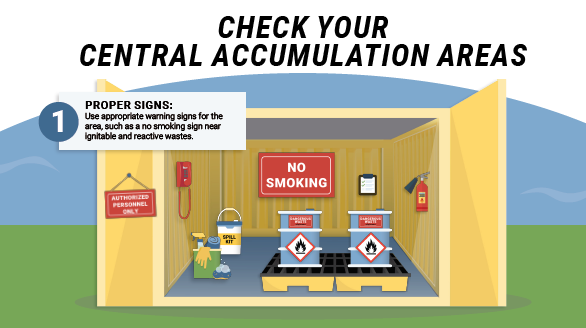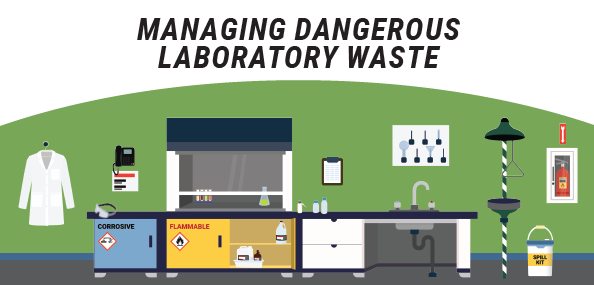Dangerous waste basics
Businesses that generate any amount of dangerous waste are responsible for this waste from cradle to grave. In Washington, the Dangerous Waste Regulations (Chapter 173-303), which are based on the federal Resource Conservation and Recovery Act (RCRA), determine what dangerous waste is, and how businesses should properly handle and dispose of it.
Click the video to learn about dangerous waste basics for Washington businesses.
For most businesses, the process will involve these basic steps:
- Designation (is your waste dangerous?).
- Determine your generator category
(small, medium, or large). - Proper containment and labeling.
- Recordkeeping.
- Waste disposal or recycling.
There is also dangerous waste reporting and possible fees that businesses may be subject to. This page offers some introductory publications, guides, and posters to help you better understand dangerous waste management.
What is dangerous waste?
Washington uses the term "dangerous waste" rather than the federal term of "hazardous waste." Because Washington's Dangerous Waste Regulations are more protective than federal laws, the definition of "dangerous waste" is more expansive than "hazardous waste."
Get a copy of the Dangerous Waste Regulations
Dangerous waste guides for businesses
Businesses may find the following publications helpful. This is by no means an exhaustive list of our publications about dangerous waste, but these offer some essential guidance:
- Guide to Dangerous Waste by Generator Category
Use this quick reference to find out what dangerous waste rules apply to each generator category (small, medium, or large quantity). - Guide to Dangerous Waste Training
Employee training is essential to worker safety and accident prevention. - Shop Guide for Dangerous Waste Management
This guide covers how to properly manage several common types of dangerous waste. Keep your employees, community, and environment safe by following these practices. - Dangerous Waste Regulations Self-Audit Checklist
This self-audit checklist includes many items from the dangerous waste regulations that we evaluate during a compliance inspection.
Guidance for small quantity generators (SQGs)
Small quantity generators (SQGs) can often follow less stringent rules than other generator categories.
Click the video or watch Dangerous Waste Basics: A Guide for Small Quantity Generators on YouTube.
Shoptalk: Dangerous waste newsletter
Shoptalk, our dangerous waste and pollution prevention newsletter, comes out three times a year. It provides information on training, best practices, rulemaking, and reporting deadlines. We recommend businesses subscribe to Shoptalk for the latest issues and updates.
Posters
Common Environmental Reports for Facilities
This two-sided mini poster (8.5 x 11 in) provides a brief overview of the most common reports, their due dates, and where to find more information.
Download or request a copy or read a plain text version
Inspect your dangerous waste drums
This poster provides quick reminders for employees doing routine inspections of dangerous waste containers. Post this near your dangerous waste accumulation area.
Spanish version:
Inspeccione sus tambores de desechos peligrosos
Check your central accumulation area
Post these guidelines near your dangerous waste accumulation area. This helps employees verify that all necessary equipment and signs are there.
Spanish version:
Revisa sus áreas de acumulación central
Managing Dangerous Laboratory Waste
If your facility has a laboratory, it's a good idea to post these safety, labeling, and storage reminders where lab workers will see them.
Labeling Dangerous Laboratory Waste
Dangerous lab waste must be labeled according to specific requirements. Post these guidelines where dangerous lab waste is generated.
Related links
Contact information
Need help?
Contact a dangerous waste inspector in your region.







